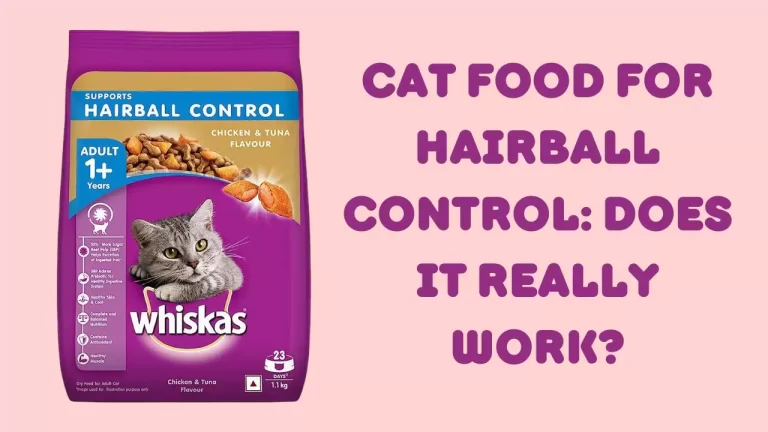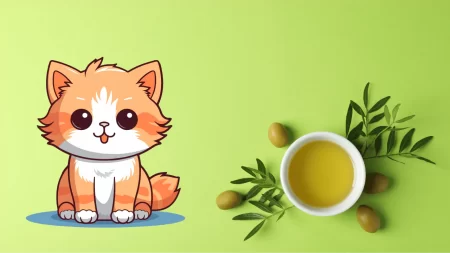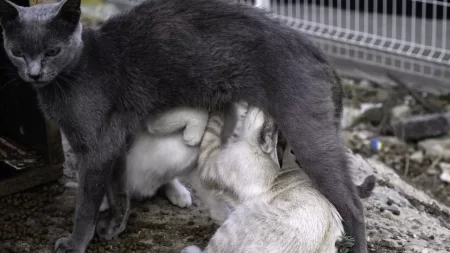Hairballs are a common problem for many cats, especially those with long or thick fur. They occur when cats swallow loose hair during grooming and it accumulates in their stomach or intestines.
Hairballs can cause vomiting, constipation, loss of appetite, and other digestive issues. Some cat owners may wonder if feeding their cats a special hairball control cat food can help prevent or reduce hairballs.
In this article, we will explore how hairball control cat food works, its pros and cons, its effectiveness, and other methods to control hairballs.
How Hairball Control Cat Food Works
Hairball control cat food is designed to help cats pass hair more easily through their digestive system and avoid forming hairballs. The main ingredient that makes hairball control cat food different from regular cat food is added fiber.
The Role of Added Fiber
Fiber is a non-digestible carbohydrate. It helps to add bulk and moisture to the stool, making it softer and easier to pass. Fiber also helps to move hair along the intestinal tract and prevent it from clumping together. By increasing the frequency and volume of bowel movements, fiber can help cats expel hair before it forms into hairballs.
Types of Fibers in Hairball Control Cat Food
There are two main types of fibers in hairball control cat food: insoluble and soluble. Insoluble fiber sources include cellulose, hemicelluloses, and lignins. These fibers act like a broom, sweeping hair and other waste out of the colon. Soluble fiber sources include pectin, guar gum, and psyllium. These fibers form a gel-like substance in the intestine, trapping hair and water and lubricating the passage of stool.
Some hairball control cat foods contain both types of fibers, while others may favor one over the other. The optimal amount and ratio of fibers for each cat may vary depending on their individual needs and preferences.
Pros and Cons of Feeding Hairball Control Cat Food
Like any other type of cat food, hairball control cat food has its benefits and drawbacks. Here are some of the pros and cons to consider before switching your cat to a hairball control diet.
Benefits of Hairball Control Cat Food
- It can help reduce the frequency and severity of hairballs in some cats.
- It can improve the overall digestive health and comfort of your cat by preventing constipation, diarrhea, and inflammation.
- It can support your cat’s skin and coat health by providing essential fatty acids and vitamins.
- It can help your cat maintain a healthy weight by providing balanced nutrition and preventing overeating.
Potential Risks and Drawbacks
- It may not work for all cats or eliminate hairballs completely.
- It may cause side effects such as gas, bloating, loose stools, or reduced appetite in some cats.
- It may be more expensive than regular cat food or require a prescription from a veterinarian.
- It may not meet your cat’s specific dietary needs or preferences if they have allergies, sensitivities, or medical conditions.
Effectiveness of Hairball Control Cat Food
The effectiveness of hairball control cat food depends on several factors, such as the quality of the ingredients, the amount and type of fiber, the feeding frequency and amount, the individual characteristics of your cat, and the presence of other methods to control hairballs.
Success Stories and Customer Testimonials
Many cat owners have reported positive results from feeding their cats hairball control cat food. Some examples are:
- “My long-haired Persian used to vomit up huge hairballs every week. Since I switched him to Royal Canin Hairball Care dry cat food, he hasn’t had a single one in months. He loves the taste and his coat is shiny and soft.”
- “My indoor tabby was always constipated and straining to pass stool. She also had frequent hairballs that made her gag. I tried Smalls Fresh Bird Human Grade Cat Food which has high fiber content and real meat. She now has regular bowel movements and no more hairballs. She also seems more energetic and playful.”
- “My ragdoll had a bad case of inflammatory bowel disease that caused him to vomit up everything he ate, including hairballs. He lost a lot of weight and became very weak. My vet prescribed Hill’s Science Hairball Control Wet Cat Food which has hypoallergenic ingredients and added fiber. He has been eating it for three months and he has stopped vomiting, gained weight and his fur is growing back.”
Factors that May Affect Effectiveness
However, not all cats respond well to hairball control cat food. Some factors that may affect its effectiveness are:
- The quality of the ingredients. Some hairball control cat foods may contain low-quality ingredients such as by-products, fillers, artificial colors, flavors or preservatives that may harm your cat’s health or cause allergic reactions.
- The amount and type of fiber. Some hairball control cat foods may contain too much or too little fiber for your cat’s needs. Too much fiber can cause diarrhea, dehydration, or nutrient malabsorption. Too little fiber can cause constipation, impaction, or hairball formation. The type of fiber also matters as some cats may prefer insoluble or soluble fibers over others.
- The feeding frequency and amount. Some hairball control cat foods may require you to feed your cat more or less often or in larger or smaller portions than usual. This can affect your cat’s appetite, metabolism, and digestion. You should follow the feeding instructions on the label or consult your vet for guidance.
- The individual characteristics of your cat. Some cats may have underlying health issues that cause or worsen hairballs, such as skin diseases, food allergies, inflammatory bowel disease, hyperthyroidism, or kidney disease. These conditions may require medical treatment or a different type of diet. Some cats may also have personal preferences for the taste, texture, or smell of their food that may affect their willingness to eat hairball control cat food.
Other Methods to Control Hairballs
Hairball control cat food is not the only way to prevent or reduce hairballs in your cat. There are other methods that you can try in addition to or instead of changing your cat’s diet. These include:
Regular Brushing and Grooming
One of the best ways to prevent hairballs is to brush your cat regularly. This will help remove loose and dead hair from their coat and reduce the amount of hair they swallow during grooming. You should use a brush that is suitable for your cat’s fur type and length and be gentle and thorough. You should also check your cat’s ears, eyes, nose, mouth, nails, and skin for any signs of infection or injury and clean them as needed.
Hairball Control Treats and Gels
Another option is to give your cat hairball control treats or gels. These are products that contain ingredients such as mineral oil, petroleum jelly, malt extract, or plant-based fibers that help lubricate the digestive tract and facilitate the passage of hair. You can give these products to your cat as a snack or mix them with their food according to the directions on the package. However, you should not overuse these products as they may interfere with your cat’s absorption of nutrients or cause diarrhea.
Conclusion
Hairball control cat food can be a helpful tool for some cats with hairball problems. It works by adding fiber to the diet, which helps move hair through the digestive system and prevent it from forming into hairballs. However, hairball control cat food is not a magic solution that works for all cats or eliminates hairballs completely. It may have some side effects, drawbacks, or limitations that you need to be aware of before switching your cat to this type of diet.
The best way to find out if hairball control cat food works for your cat is to try it for a few weeks and monitor their response. You should also consult your veterinarian for advice and recommendations on the best hairball control cat food for your cat’s needs and preferences. You should also combine hairball-control cat food with other methods to control hairballs, such as regular brushing and grooming and hairball-control treats and gels.







